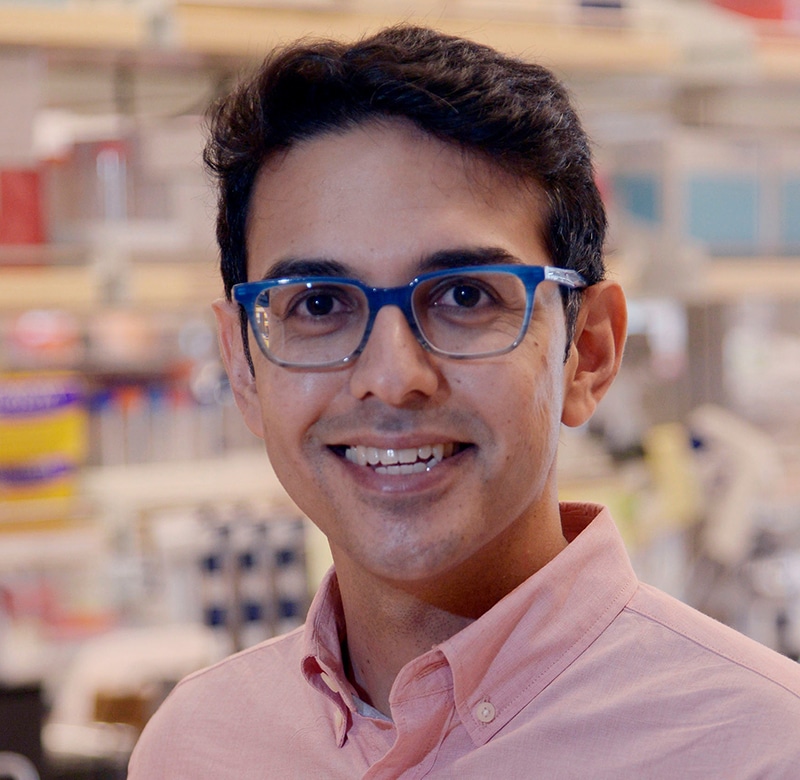The New York Genome Center (NYGC) welcomes Neville Sanjana, PhD, as a Core Member and Assistant Investigator. Dr. Sanjana holds a joint appointment at New York University as an Assistant Professor in the Department of Biology and the Center for Genomics and Systems Biology, in conjunction with his association at NYGC. He also holds an associate faculty appointment with the Institute for Systems Genetics at NYU Langone Medical Center.
Dr. Robert Darnell, NYGC’s Founding Director and CEO, said, “We are delighted and exceptionally fortunate to to welcome Dr. Sanjana to NYGC, together with our partner institution, NYU, where he will hold a joint appointment. Neville is an extraordinarily thoughtful, articulate and creative scientist. He has applied his deep expertise in CRISPR technology, bioinformatics, and biology to drive new insights in cancer and the brain, and we look forward to supporting him as he brings his considerable energy to New York.”
Dr. Sanjana joins NYGC from the Broad Institute of Harvard and MIT and the Departments of Brain and Cognitive Sciences and Bioengineering at MIT, where he was a postdoctoral scientist in the laboratory of Dr. Feng Zhang. At the Broad Institute/MIT, Dr. Sanjana was a recipient of the NIH Pathway to Independence Award (K99/R00) and a Simons Center for the Social Brain Postdoctoral Fellowship. During his postdoctoral work, he was also recognized with awards from the American Society of Gene & Cell Therapy and the Paul Allen Institute for Brain Science. Dr. Sanjana received his PhD in Neuroscience from MIT where he was a Howard Hughes Medical Institute Predoctoral Fellow. He completed his undergraduate education at Stanford University with degrees in Symbolic Systems and English Literature.
His scientific interests include genome engineering, functional genomic screening using programmable nucleases, autism genetics and synaptic pathophysiology. In his postdoctoral research, Dr. Sanjana helped develop two classes of targeted nucleases for genome engineering: TALEs (transcription activator-like effectors) and the microbial immune system-derived CRISPR (Clustered regularly-interspaced short palindromic repeats) enzymes. He has employed these genome-engineering tools in a variety of contexts to understand how genetic variants affect human health and disease.
Using genome-scale CRISPR screens, he has discovered genes responsible for drug resistance in melanoma, for human stem cell survival and for tumor metastasis. “Genome sequencing has identified many new disease-associated genetic variants but it is still difficult to understand which ones are important. With genome engineering, we can edit DNA with precision and, using pooled screening approaches, rapidly test many genetic variants to find which ones really cause a particular disease,” said Dr. Sanjana.
As a postdoctoral fellow, Dr. Sanjana has also studied the development of the brain and, in particular, what goes awry when neurons contain genetic changes found in children with autism. His research has combined targeted genome engineering of specific autism-associated gene variants with well-characterized human stem cell and neuron models. “Complex neural disorders — like autism or schizophrenia — present an immense challenge because we are still trying to find the relevant molecular, cellular and behavior correlates of these diseases. But the biological tools and human genetic sequencing data have improved tremendously over the past few years and we are in a great position to understand exactly what is going wrong in these diseases as neurons wire up,” he said.
Dr. Sanjana is looking forward to joining the community of scientists at NYGC. He will collaborate with several other groups, including those working on regulatory variants in the noncoding genome, autism biology, and mutations driving cancer. “I think NYGC is a place where science moves forward by bringing people together. I am grateful to have the opportunity to be a part of this collaborative environment. I hope to learn from the talented faculty, staff and students already there and help contribute to new biological discoveries with a lasting impact on human health and understanding.”
